News
Customize list
-
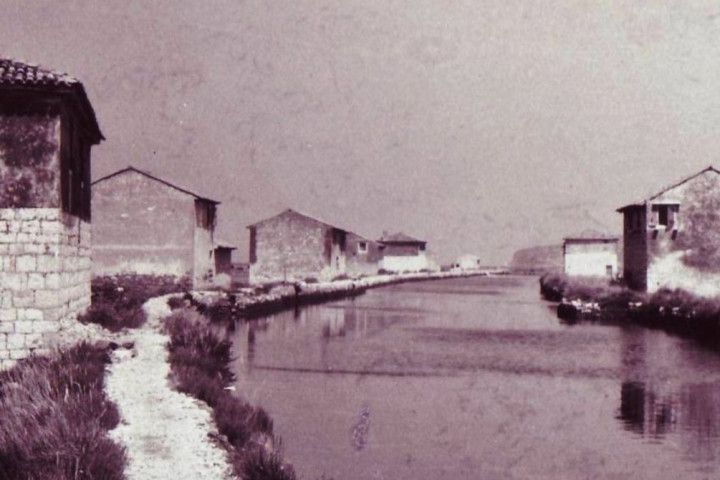
Use of ship technology for self-maintenance of saltpan cottages
Ship technology could offer a solution for the saltpan cottages which are falling inexorably into ruin in the area of the Sečovlje saltpans. This has been determined by students of various University of Ljubljana faculties under the mentorship of Senior Lecturer Mag. Valter Suban of the University’s Faculty of Maritime Studies and Transport. They were aware of the problem of degradation in the area of the Sečovlje saltpans, so they were looking for a way for the saltpan cottages to be reconstructed and changed into sustainable self-maintaining projects.
-
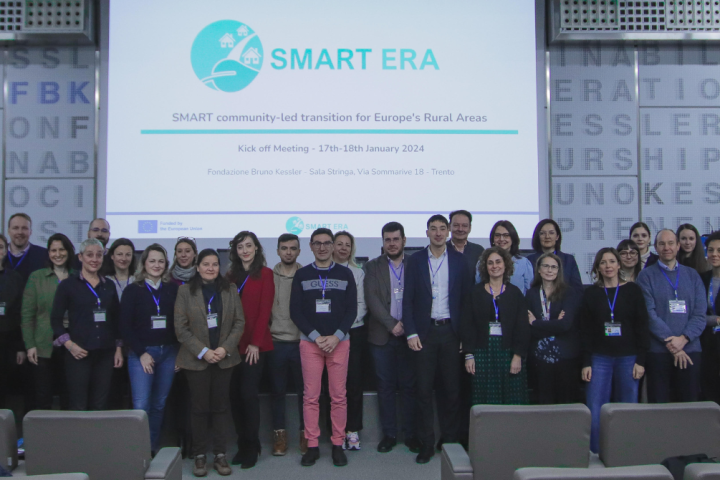
SMART ERA: SMART Community-led Transition for Europe's Rural Areas
Europe's rural areas are facing processes of depopulation, particularly of young people, which is leading to an ageing demographic profile. This is causing a number of structural problems, such as fewer jobs, deteriorating infrastructure and a shrinking supply of services of general interest. On the other hand, development of digital technologies and the increase in remote work have also led to a reverse trend of rural in-migration, which was most evident during the COVID-19 pandemic. These trends can be harnessed for rural growth through smart adaptation strategies, development of new integrated solutions, and the integration of local knowledge and cultural heritage.
-

How successful was psychology in policy-making during the pandemic?
The COVID-19 pandemic had a profound effect on people's daily lives. Decision-makers had to make decisions and implement measures to curb the spread of the virus, which impacted many. Because similar situations are likely to occur again in the future, it is important to explore how psychology can help develop more efficient measures to curb the pandemic. This was the focus of the study, published in thejournal Nature and conducted by researchers from over 30 countries, including Dr Žan Lep from the Faculty of Arts, University of Ljubljana.
-
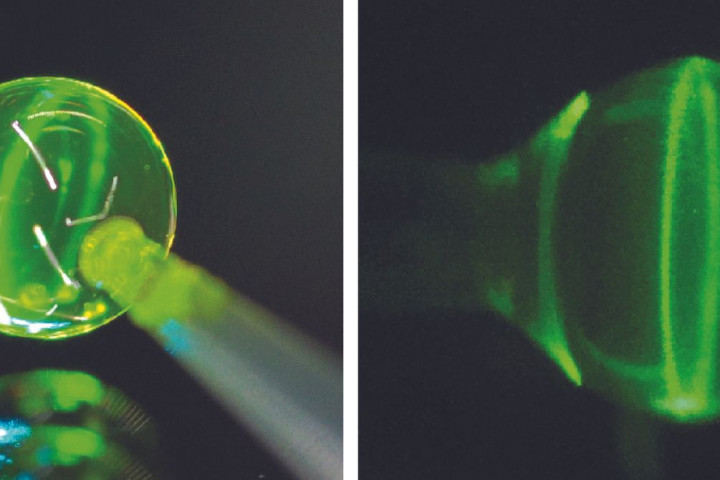
Soap bubbles can be used as lasers
Soap bubbles, with their changing colors, impress both adults and children and are a source of inspiration for researchers in various fields - mathematics, physics, chemistry and biology. Among them are Zala Korenjak and Asst. Dr. Matjaž Humar from the Jožef Stefan Institute and the Faculty of Mathematics and Physics, University of Ljubljana, who were the first to show that soap bubbles can be used as lasers.
-
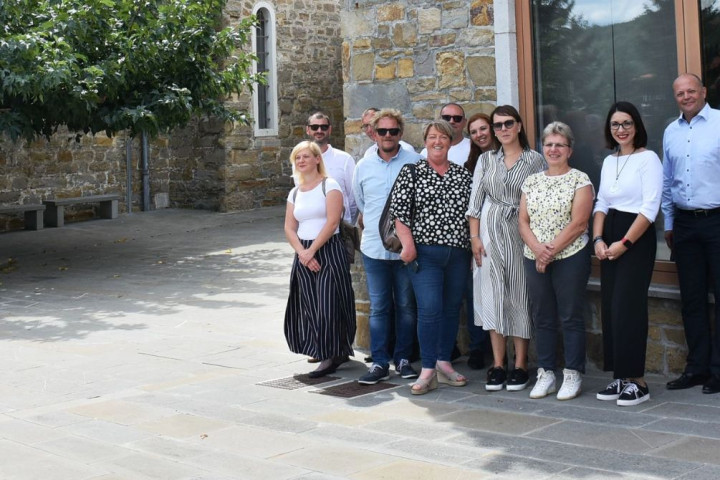
Smart Agro Grape – Digital platform for vineyard managers
How can you set up smart vineyards that would be sustainably oriented and that would only use the essential quantities of sprays and fertilisers? This challenge has been taken up by the European project Smart Agro Grape, in which the lead partner is the Faculty of Electrical Engineering of the University of Ljubljana. The project will involve the development of a digital platform and a mobile phone app, which will allow vineyard managers to access / get notifications and thereby to respond early to situations that could lead to the onset of various diseases in the vineyard, and will enable more commercially successful operation.
-

Almost 2.8 million European funds for innovative student exercise programs
The Ministry of Cohesion and Regional Development has approved almost 2.8 million euros in European funds for the zMIGAJ! program. This program will provide young students with two extra hours of exercise per week, which they will co-create with their teachers. Encouraging regular exercise is essential for young people's health and well-being, especially as they are increasingly exposed to stress, sedentary lifestyles, and digital screens. Regular exercise has been proven to improve mood, self-esteem, concentration, and academic success, as well as promote social bonds, cooperation, and mutual respect.
-

The negative effects of the corona period still burden the development and health of children
They were less physically active, spent even more time in front of screens and slept longer, we all still remember the "new reality" of children and adolescents during the covid closure of society. But - how long-term harmful restrictions and (too) long school closures have really (re)shaped the behavior of our children, is one of the first to reveal a population cohort study based on the Slovenian system for monitoring physical fitness (SLOfit), which has just been published in the prestigious scientific journal The Lancet Regional Health Europe.
-

Dr. Sanela Pansinger receives Horizon Europe - ERA postdoctoral fellowship for integrating citizen science into urban planning
Austrian researcher Dr. Sanela Pansinger has been awarded a postdoctoral ERA fellowship under the European Commission's call for proposals HORIZON-WIDERA-2022-TALENTS for a two-year research project HUBCITIES at the Faculty of Architecture, University of Ljubljana, where she will work with her supervisor Dr. Lucija Ažman Momirski from the Department of History, Theory and Restoration. Dr. Lucija Ažman Momirski explained, 'The main aim of the project is to develop a new approach to sustainable spatial development of airport and seaport areas using citizen science. Residents are actively involved in co-designing and negotiating future spatial and urban development through joint research with urban planners. This approach makes urban planning more satisfying for residents, professionals and all other stakeholders".
-
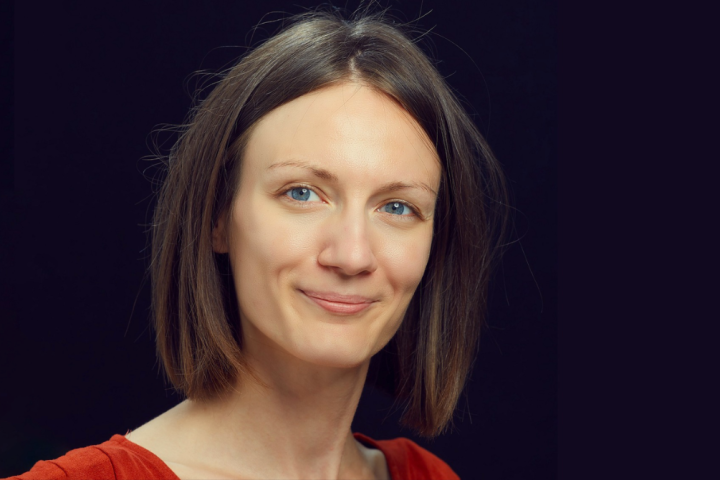
Lea Rems, PhD, from the Faculty of Electrical Engineering of the University of Ljubljana, successful in the European Research Council’s call for proposals
The European Commission has published the results of the call for proposals for the European Research Council (ERC) Starting Grant 2023. After a ten-month evaluation process, 400 projects were selected for funding from almost 2,700 applications from all over the world. Among the successful applicants is the researcher Lea Rems, PhD, who will lead the EUR 1.5 million, five-year ERC project REINCARNATION at the Faculty of Electrical Engineering, University of Ljubljana (UL FE).
-

3D Printing of Piezoelectric Sensors Unaffected by Electromagnetic Interference
Researchers from the University of Ljubljana have developed a unique method for printing advanced sensors that are not affected by electromagnetic interference. The 3D printing of sensors allows for their rapid and adaptable integration into other 3D printed structures, even in hard-to-reach places, which is particularly important in medicine, such as in customized prosthetics. At the same time, these sensors can be used to monitor the lifespan of other 3D printed structures, such as parts for the automotive industry.
-
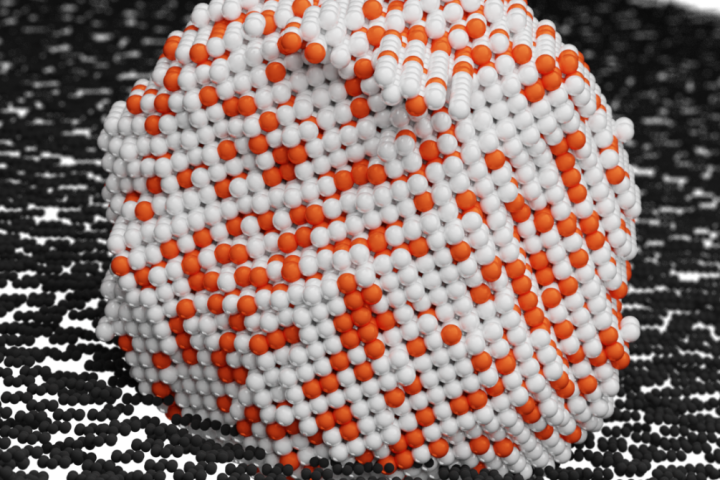
Irregularities in hydrogen fuel cell catalysts
The increasingly evident consequences of climate change are a major motivation for the development of low-carbon technologies, among which fuel cells, using hydrogen as fuel, hold great promise. One of the obstacles to the wider commercialization of the technology is the use of expensive and rare platinum in catalysts, which is why effort goes into trying to reduce the amount of platinum used while preserving the relevant properties of these materials. For the oxygen reduction reaction, one of the reactions in a fuel cell, we use catalysts with alloyed nanoparticles containing platinum and cheaper transition metals. Since certain defects in the nanoparticle structure can occur during the preparation of the catalyst, the effects of all aspects of the structure on the performance in the fuel cell need to be studied in detail.
-
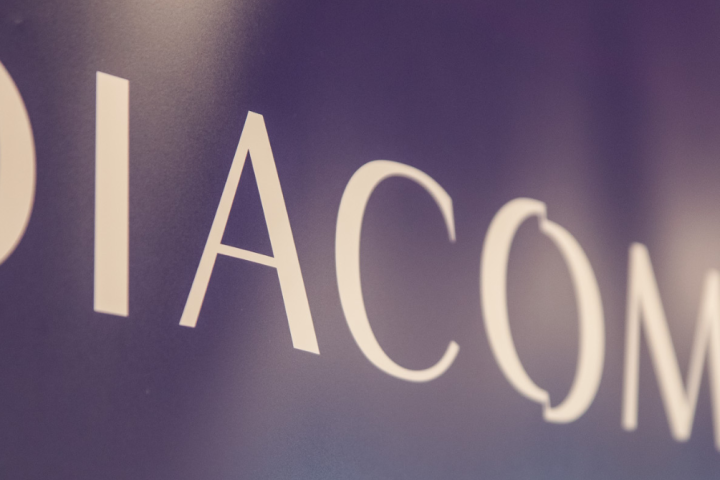
The DIACOMET Project has Begun: Dialogue Expands Horizons
A new EU-funded project DIACOMET, involving ten European universities, media companies, non-governmental and research organizations, started with a kick-off meeting at Vytautas Magnus University (VMU) in Lithuania.
-

The thin line of sheet metal forming
The production of thin-walled components from sheet metal is an integral part of the automotive, aerospace and other industries. Forming the initial sheet metal into the desired final shape of the product requires overcoming reaction forces and thinning of the sheet metal, which can lead to fractures. Knowing the influence of many parameters of the forming process allows controlled change of the shape of the workpiece, thus achieving the target shape of the final component.
-

Project »FEATURE«: Far-from-Equilibrium ATtractors at Ultra-Relativistic Energies
One of the grand challenges facing the high-energy physics community is understanding the far-from-equilibrium evolution of quantum chromodynamics (QCD). This new postdoctoral Marie Skłodowska-Curie project, carried out at the Faculty of Mathematics and Physics, will take the critical step to bring theoretical understanding to the level of complexity required for realistic phenomenology, by fully characterizing the properties of the QCD attractor without resorting to simplifying assumptions done in the current preliminary studies. This will be done via the inclusion of fermionic degrees of freedom and by relaxing simplifying spatial symmetries.
-
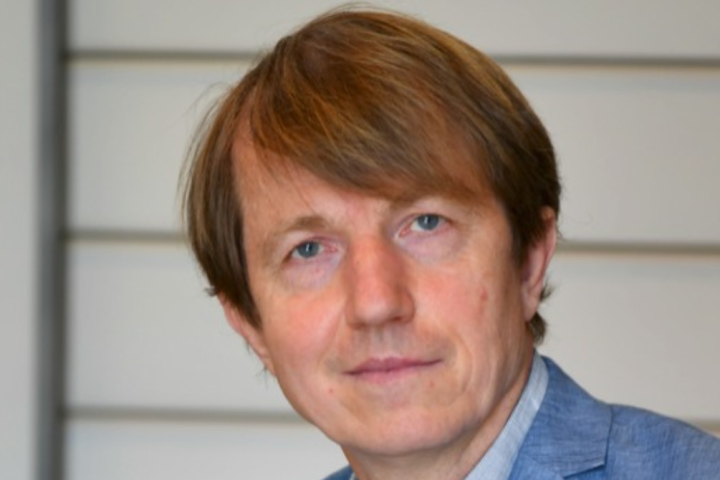
Mathematical physicist Prof. Dr. Tomaž Prosen has become the first in Slovenia to receive his second prestigious European Research Council (ERC) Advanced Grant (ERC ADG)
The awarded ERC AdG, which is aimed at established researchers, is undoubtedly the most prestigious scientific project that an individual researcher can receive. For Prof. Dr. Tomaž Prosen, this is already his second such project, this time titled QUEST (Quantum Ergodicity: Stability and Transitions). In addition to being a top-level success on a global scale for the researcher, it is also an outstanding achievement for the Faculty of Mathematics and Physics at the University of Ljubljana - primarily for its exceptionally high-quality research environment that it provides for researchers and their groups.
-
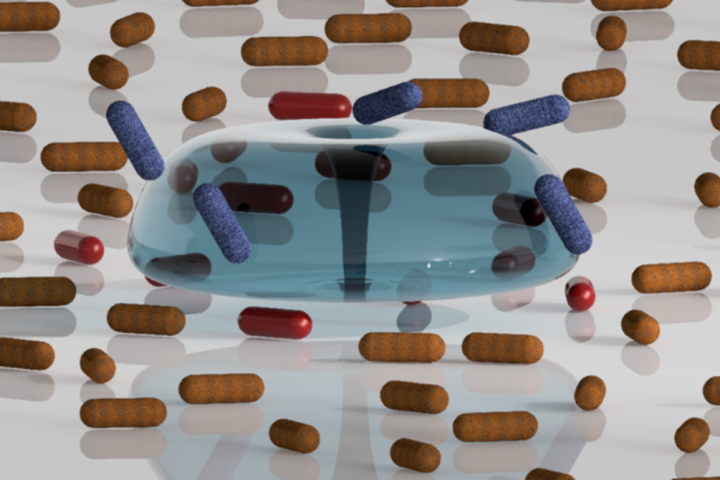
Treating wastewater through cavitation and understanding the effects of bubbles on bacterial cells
Increasing environmental pollution and drinking water shortages are a growing socioeconomic problem, in which cavitation technology can contribute to a cleaner and greener approach to wastewater treatment. Cavitation is a physical phenomenon that describes the phase change from liquid to vapour and back at constant temperature. The mechanical, thermal and chemical effects of cavitation can be utilised for various purposes, including to inactivate microorganisms in drinking water and wastewater. It has been proven that cells are subjected to damage in the immediate vicinity of a bubble. Further numerical analysis has identified the formation of microjets as a possible mechanism of bacterial cell damage.
-

New method for predicting adult height
Researchers from Jožef Stefan Institute and Faculty of Sport, University of Ljubljana, developed a new method for predicting adult height of children and adolescents. The method uses large population data collected in the framework of the SLOfit program over decades. It compares the growth curve of a child with those of the most similar individuals and substantially outperforms the existing height predicting methods.
-
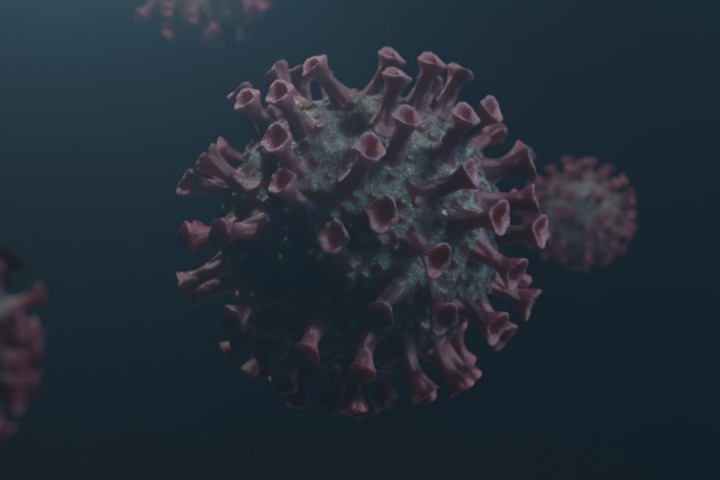
Hydrodynamic cavitation can be used to inactivate enveloped viruses
Researchers from the Faculty of Mechanical Engineering at the University of Ljubljana, led by Prof. Dr. Matevž Dular, have shown in an experimental study that the phi6 virus, which belongs to the viruses with a lipid envelope, can be successfully inactivated using hydrodynamic cavitation. The study is significant in that it shows that hydrodynamic cavitation has the potential to inactivate pathogenic enveloped viruses in water under ambient conditions. Although the primary mode of transmission for enveloped viruses is not water, the recent pandemic has reminded us that we need to be prepared for the worst, given the possibility of the emergence of enveloped viruses or virus strains that can be transmitted through water in the future.
-
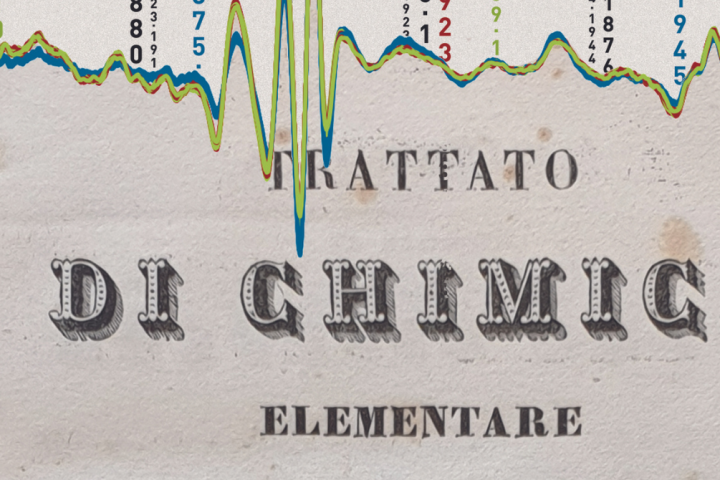
A research breakthrough in the dating of historical books
Heritage scientists can now date historical paper using only infrared light and computational analysis of spectroscopic data. In the research of postdoctoral researcher Dr. Floriana Coppola and colleagues, which is published in the top scientific journal 'Journal of the American Chemical Society', shows that it is possible to date paper extremely accurately, even to 2 years. An uncertainty this low is not possible with any other method, much less with a non-destructive method.
-
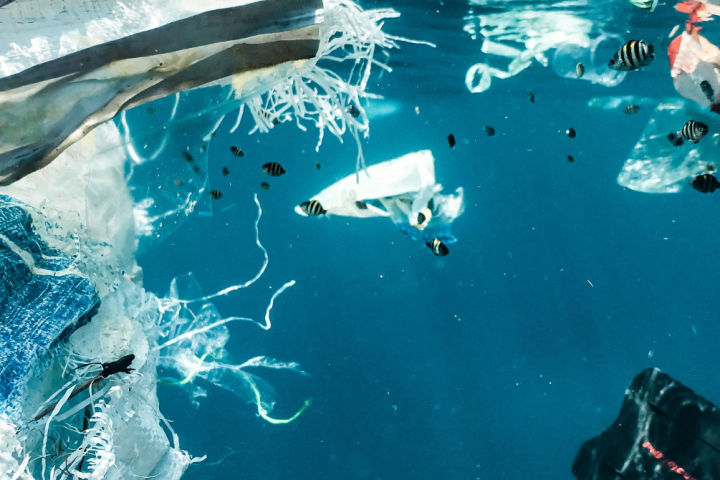
Using cavitation to break down invisible water pollutants
Researchers from the Faculty of Mechanical Engineering and the National Institute of Chemistry conducted an experimental study in which they achieved the degradation of a water-soluble synthetic polymer - poly(vinyl alcohol) PVOH - by acoustic and hydrodynamic cavitation. The use of PVOH is rapidly increasing, and as a result, increasing amounts of this material are being released into the environment. PVOH is widely used in the textile and paper industries, as well as in households, for example in the form of detergent pods. It is estimated that thousands of tons of it are washed into the aquatic ecosystem every year.
